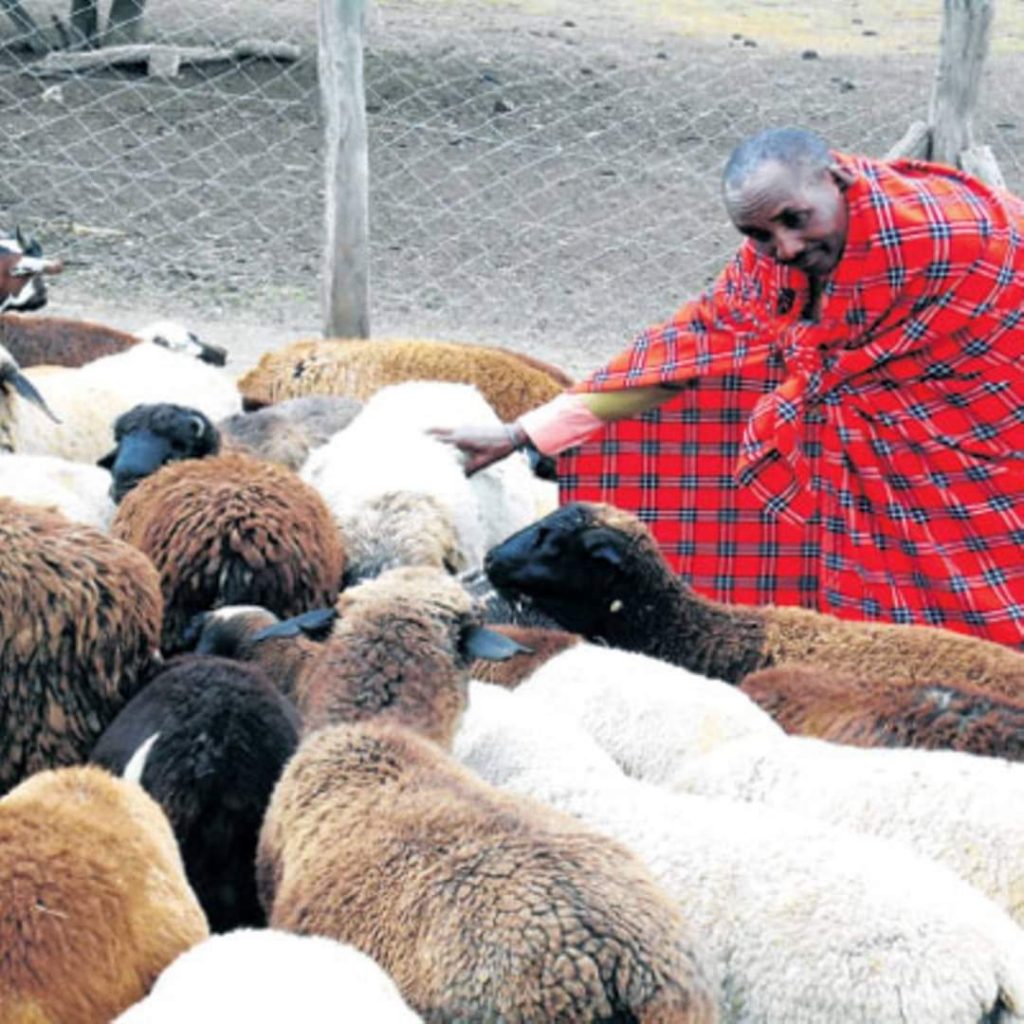How to make money from sheep farming
5 min read
Sheep farming in Kenya is mainly kept for wool and mutton. The ewe has a gestation period of 142 to 152 days, averaging 147 days and they come on heat every 17 days lasting for 24 to 48 hours enabling one to recoup capital in a short period.
Since they are hardy, sheep provide good source of income in barren, desert, semi-arid and mountainous areas. A sheep enterprise requires little labour and small capital to start.
The animals further require little space and can be raised alongside other livestock. They eat wide varieties of plants, thus, utilising even the available low quality forage sufficiently.
When properly managed, a sheep farming in Kenya can be a great source of income as products such as wool and meat are in high demand. However, one requires to understand the major components of sheep farming in Kenya to come up with a proper business plan for successful sheep farming in Kenya.
BREEDS
We have fine wool breeds like merino; medium wool breeds such as Corriedale, Hampshire, Suffolk, Dorset horn; indigenous hair sheep such as Red Maasai, Dorper and the fat rumped breeds like Black-headed Persian and Somali sheep. Crossbreeding Dorpers and Hampshires produces offspring with quality mutton and fast growth rates (mature in five to six months). During selection, go for suitable quality breeds as per your desired production.
HOUSING
The house should be clean, have dry beddings, proper drainage and be suitable enough to keep the animals safe from adverse weather and harmful predators. An adult sheep requires about 16 to 20 square feet floor spacing and lambing pens 16 to 25 square feet. Keep the roof at least 6ft high from the floor with good ventilation system to allow sufficient air flow and light. Graze them in closed paddocks so that they stay safe. The house should also be easily accessible during deliveries and manure handling.
FEEDING
To realise optimal growth, maximum production and have a disease-free healthy flock, high quality and nutritious feeds are mandatory. Sheep requires a daily feed intake of about 3 per cent of their body weight and usually all types of grasses and plants make food for the animals, apart from hay. They should be fed according to their nutrient requirements, age and weight and stage or level of production. Generally, they require energy, protein, vitamins, minerals, fibre and water.
Energy deficiency may result into reduced growth, weight loss, low conception rates, fewer multiple births, small fibre diameter and weak spots in wool fibre. Protein requirements are highest for young growing lambs to build muscle and lactating ewes to produce milk.
The most common protein supplements are soybean, cottonseed, sunflower and intermediate sources like legume hays when harvested in the early to mid-bloom stage. Minerals such as phosphorus, magnesium, cobalt and copper among others should also be incorporated into the ration either in a trace mix or in licks.
Fibre is important to keep rumen function properly by increasing rumination and salivation. To complement high quality and nutritious feeds, always provide adequate amount of clean and fresh water freely especially for lactating ewes.
Flushing is done to ewes by providing better quality pasture to increase ovulation rate and subsequent lambing rate. Diet for sheep remains the same except if you want to flush to improve their body condition before breeding.
BREEDING
Ewe lambs should not be bred until after puberty between five and 12 months or 70 per cent of their mature weight while ram lambs between five and seven months of age, at 50 to 60 percent of their mature weight. Testicle size is a good indication of a ram’s sperm-producing ability normally taking 49 days. Before breeding, ewes should be dewormed using anthelmintics, have their hooves trimmed and vaccinated if need be. This means only healthy ewes should be exposed to rams for breeding.
Mating may consist of using one ram per group of ewes. Cull infertile rams and separate the older rams from younger ones to reduce fighting incidences. A ram to ewe ratio of 1:25 for ram lambs and 1:35 or more for mature rams is recommended. If natural breeding does not yield satisfactory results, it is possible to artificially manipulate the reproductive cycle of the ewe through using hormones like melatonin and prostaglandin or introduction of a teaser ram to stimulate ovulation.
LAMBING
Overfed ewes experience lambing difficulties hence they should be assisted by extracting or repositioning the lambs. Allow ewes to lick, clean and suckle their lambs for colostrums. When lambs are several weeks old, identification through ear tagging should done, docking, castration (within a week) and vaccination commonly anti-clostridial must also be done at about 10 to 12 weeks; and re-vaccinated annually about three weeks before lambing to provide high antibody concentrations in colostrum during the first several hours after lambing.
DISEASE CONTROL
External and internal parasites control and vaccination are the most efficient ways to keep sheep disease-free. Internal parasites include worms which are ingested during grazing and are controlled by oral anti-parasitic anthelmintics or drenches.
External sheep parasites include lice, nose bots, sheep itch mites, and maggots. They are controlled using backliners, sprays or immersive sheep dips. Crutching (shearing wool from a sheep’s rump) is a common preventive method. Vaccinations are done against deadly diseases like anthrax and foot and mouth disease, among others.
Always keep in touch with your veterinarian for treatments.
MARKETING
With sheep farming in Kenya, market for sheep is unlimited in form of whole carcass for butcheries or primal cuts due to the rising demand for mutton, foundation stock for breeding, wool whose price has also gone up lately and other hygienically value-added products. Exporting to international market where their products have a huge demand is also an option especially through Kenya Meat Commission.
RECORDS
Basic performance records should be kept for better management, references and planning, including birth, weight and health records.
SHEEP FARMING GUIDE
E- COPIES AVAILABLE @250/- for softcopy e-books: ,
For E-COPIES, pay through Mpesa Till 664444 and Text your email to 0724512194.
Others Available @150/= each : POULTRY, POULTRY DISEASES, POULTRY FEEDS, PASSION FRUIT FARMING, CAPSICUM GROWING, MUSHROOM FARMING, URBAN FARMING, POTATO FARMING and GREEN HOUSE FARMING





